Papers by Katherine A. Mason

Everyday Disruptions and Jewish Dilemmas: Preliminary Insights from the Pandemic Journaling Project
Jewish Social Studies, 2020
Notably, 12 percent of these PJP participants identify as Jewish, due likely to dissemination eff... more Notably, 12 percent of these PJP participants identify as Jewish, due likely to dissemination efforts by the University of Connecticut's Center for Judaic Studies and Contemporary Jewish Life, one of our sponsors 3 We begin by sketching the contours of the PJP itself, which was created to capture the lived realities of the coronavirus pandemic just as it began shaking the foundations of the everyday-around the world, but especially in high-rate, high-risk countries like the US In Week 1, before contributing their first journal entries, participants are asked to complete a baseline survey (using validated survey questions wherever possible), that addresses demographics, COVID-19 exposure, and self-reported physical and mental health status [ ]other analytic projects, including this essay, will examine the challenges posed by the pandemic to members of a particular demographic group (as defined by self-reported gender, age, race-ethnicity, religion, or other features or combination of features) First is a commitment to "writing it down"-to chronicling what people are experiencing now, in their own words
Current History, 2020
China faced the arrival of COVID-19 armed with new infrastructure, tools, and personnel that it h... more China faced the arrival of COVID-19 armed with new infrastructure, tools, and personnel that it had developed as part of a nationwide overhaul of its public health system in the wake of the 2003 SARS epidemic. The country learned two major lessons from SARS: it needed to increase its scientific professionalism and transparency, and it needed to build upon the successes of its authoritarian disease control capabilities. These two lessons were on full display during China’s COVID-19 response. The goals and methods they implied were sometimes in contradiction with each other, however, and ultimately they failed to prevent a catastrophic pandemic.
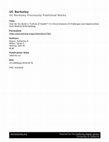
Population Health Management, 2020
The Robert Wood Johnson Foundation's Culture of Health Action Framework aims to ''make health a s... more The Robert Wood Johnson Foundation's Culture of Health Action Framework aims to ''make health a shared value'' and improve population health equity through widespread culture change. The authors draw upon their expertise as anthropologists to identify 3 challenges that they believe must be addressed in order to effectively achieve the health equity and population health improvement goals of the Culture of Health initiative: clarifying and demystifying the concept of ''culture,'' contextualizing ''community'' within networks of power and inequality, and confronting the crises of trust and solidarity in the contemporary United States. The authors suggest that those who seek to build a ''Culture of Health'' refine their understanding of how ''culture'' is experienced, advocate for policies and practices that break down unhealthy consolidations of power, and innovate solutions to building consensus in a divided nation.
American Ethnologist, 2018
Academic quantitative population health scientists (AQPHS) in the US care for populations with an... more Academic quantitative population health scientists (AQPHS) in the US care for populations with an ostensibly apolitical set of quantitative methods. This quantitative care has three interconnected components: AQPHS care about populations, they care for their data sets and models, and they care with these models' outputs. In the process their ideals of objectivity compete with, and enable, a moral ideal of political advocacy. Slipping between knowledge and intervention, the "real" and the imagined, and individuals and populations, AQPHS produce knowledge that they hope will change public narratives about marginalized populations. In doing so they draw on ideal types, converting quantitative findings about populations into speculation about individual behavior. AQPHS' ideal types both precede and tautologically reemerge from their science.

Studies in Comparative International Development, 2015
In this article, I trace how the race-making of people, viruses, and the places they share became... more In this article, I trace how the race-making of people, viruses, and the places they share became a powerful means by which Chinese public health professionals made sense of two major infectious outbreaks that threatened to stall or interrupt China's development: the SARS outbreak of 2003 and the H1N1 influenza pandemic of 2009. By inscribing geographical stability onto infected bodies in motion through the languages of race and genetics, Chinese public health professionals sought to constrain the mobility of infection and, in doing so, to contain the symbolic and material threats to China's modernity and development that flu-like infections, and the people who carried and spread them, had come to represent. While SARS in this imaginary became a BChinese^or BCantonese^disease, H1N1 became a EuroAmerican disease that, when it reached inside China, adhered more easily to those Chinese who did not quite belong. In constructing this imaginary, public health professionals' racialization of certain groups thought to be infectious joined with the racialization of the infections themselves. H1N1 could not easily infect most Chinese because both the virus and its hosts were racially alien.

Mobile Migrants, Mobile Germs: Migration, Contagion, and Boundary-Building in Shenzhen, China after SARS
Medical Anthropology, 2012
Shenzhen, a city located on the border between Mainland China and Hong Kong, is populated primari... more Shenzhen, a city located on the border between Mainland China and Hong Kong, is populated primarily by internal Chinese migrants. After the 2003 SARS epidemic, the pressure in Shenzhen to contain infectious disease has been considerable. By engaging with issues of global biosecurity, migration and citizenship, and intersubjectivity in medicine, I argue that in their attempts to prevent another SARS and protect their own subject positions as modern, urban citizens, Shenzhen's public health professionals worked to maintain precarious boundaries between themselves and their city's majority migrant population. However, by establishing the migrants as dangerous, biological noncitizens, by denying connections between the migrants' experiences and their own experiences of migration, by failing to engage with the migrants as subjects, and by defending structures that institutionalized these exclusions, they undermined both the health of the migrants and the stability of the city they were trying to protect.
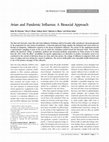
The Journal of Infectious Diseases, 2008
The Harvard University Asian Flus and Avian Influenza Workshop, held in December 2006, introduced... more The Harvard University Asian Flus and Avian Influenza Workshop, held in December 2006, introduced a biosocial approach to the preparation for and control of pandemics. A biosocial approach brings together the biological and social sciences to develop an integrative, collaborative response to the threat of pandemic influenza. The articles in this supplement provide a representative sampling of some of the ways in which the workshop worked toward this biosocial vision. These articles address the historical "siting" of epidemics, political and structural pandemic preparedness in China, lessons to be taken from the 1976 "swine flu affair," possibilities for genetic engineering as an alternative to poultry vaccination, issues to be considered in the control of infectious disease in swine and avian species, the ecology of influenza in migratory birds, and issues of stigma and trust during the control of epidemics. The need to build public trust and public health infrastructure is one of the primary messages of this collection.
Asian flus in ethnographic and political context: A biosocial approach
Anthropology & Medicine, 2008
This collection highlights some of the social, cultural, political and economic factors that must... more This collection highlights some of the social, cultural, political and economic factors that must be considered in developing a biosocial approach to pandemic influenza control and prevention. To date, most discussions of the current spread of avian influenza and a predicted human influenza pandemic have lacked rigorous analysis of the local contexts in which flus arise and in which the effects of a pandemic would most strongly be felt. Such local engagement is necessary to the development of an effective and ethical programme of epidemic control. The papers in this special issue take a step towards filling this gap by exploring the local moral worlds associated with avian influenza in China, Indonesia and Thailand.
A Comparison of HIV Infection and Related Risks Among Male Sex Workers in Different Venues in Shenzhen, China
AIDS and Behavior, 2010
Academic quantitative population health scientists (AQPHS) in the United States care for populati... more Academic quantitative population health scientists (AQPHS) in the United States care for populations with an ostensibly apolitical set of quantitative methods. This quantitative care has three interconnected components: AQPHS care about populations, they care for their data sets and models, and they care with these models' outputs. In the process their ideals of objectivity compete with, and enable, a moral ideal of political advocacy. Slipping between knowledge and intervention, the "real" and the imagined, and individuals and populations, AQPHS produce knowledge that they hope will change public narratives about marginalized populations. In doing so they draw on ideal types, converting quantitative findings about populations into speculation about individual behavior. AQPHS' ideal types both precede and tautologically reemerge from their science.

In this article I argue that the global biosecurity project that arose out of the events of the S... more In this article I argue that the global biosecurity project that arose out of the events of the SARS epidemic of 2003 created a new balance of secrecy and transparency within the public health arm of the Chinese state. In an eff ort to meet national and international demands for greater transparency in support of a " common good, " local public health offi cials engaged in what I call hypertransparency. Th is hypertransparency took two forms: the real-time online sharing of disease incidence data within the public health bureaucracy, and the over-performance of disease fi ghting strategies in front of a wider local and global public. Because local Chinese offi cials interpreted the " common good " diff erently from their international partners, neither of these eff orts succeeded in erasing the crucial role that local offi cials continued to play in determining what should and should not be shared, and with whom. Secrecy continued to be an important component of China's securitization eff orts, with hypertransparency ultimately concealing more than it revealed.
Caduff reflect on -among other issues -the place and privileging of the laboratory, the simultane... more Caduff reflect on -among other issues -the place and privileging of the laboratory, the simultaneously limiting and lubricating effects of network connections, the problems with foregrounding expertise over power as an explanatory framework, and the way that experts wield speculation and temporality as tools in the global health arsenal. Theresa MacPhail concludes with a response and meditation on her notion of pathography and the continued mutations of a viral anthropology.
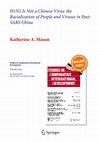
In this article, I trace how the race-making of people, viruses, and the places they share became... more In this article, I trace how the race-making of people, viruses, and the places they share became a powerful means by which Chinese public health professionals made sense of two major infectious outbreaks that threatened to stall or interrupt China's development: the SARS outbreak of 2003 and the H1N1 influenza pandemic of 2009. By inscribing geographical stability onto infected bodies in motion through the languages of race and genetics, Chinese public health professionals sought to constrain the mobility of infection and, in doing so, to contain the symbolic and material threats to China's modernity and development that flu-like infections, and the people who carried and spread them, had come to represent. While SARS in this imaginary became a BChinese^or BCantonese^disease, H1N1 became a EuroAmerican disease that, when it reached inside China, adhered more easily to those Chinese who did not quite belong. In constructing this imaginary, public health professionals' racialization of certain groups thought to be infectious joined with the racialization of the infections themselves. H1N1 could not easily infect most Chinese because both the virus and its hosts were racially alien.
1. I conducted ethnographic fieldwork-including participant observation as well as semi-structure... more 1. I conducted ethnographic fieldwork-including participant observation as well as semi-structured, unstructured and life history interviews-at 10 provincial-, municipal-and district-level governmentaffiliated public health work units in several large cities in the Pearl River Delta, between September 2008 and August 2009. Follow-up research was conducted in August 2010. In the interest of protecting the anonymity of my informants, I do not name specific work units, and I have changed all names, as well as certain identifying information.

Shenzhen, a city located on the border between Mainland China and Hong Kong, is populated primari... more Shenzhen, a city located on the border between Mainland China and Hong Kong, is populated primarily by internal Chinese migrants. After the 2003 SARS epidemic, the pressure in Shenzhen to contain infectious disease has been considerable. By engaging with issues of global biosecurity, migration and citizenship, and intersubjectivity in medicine, I argue that in their attempts to prevent another SARS and protect their own subject positions as modern, urban citizens, Shenzhen's public health professionals worked to maintain precarious boundaries between themselves and their city's majority migrant population. However, by establishing the migrants as dangerous, biological noncitizens, by denying connections between the migrants’ experiences and their own experiences of migration, by failing to engage with the migrants as subjects, and by defending structures that institutionalized these exclusions, they undermined both the health of the migrants and the stability of the city they were trying to protect.
This collection highlights some of the social, cultural, political and economic factors that must... more This collection highlights some of the social, cultural, political and economic factors that must be considered in developing a biosocial approach to pandemic influenza control and prevention. To date, most discussions of the current spread of avian influenza and a predicted human influenza pandemic have lacked rigorous analysis of the local contexts in which flus arise and in which the effects of a pandemic would most strongly be felt. Such local engagement is necessary to the development of an effective and ethical programme of epidemic control. The papers in this special issue take a step towards filling this gap by exploring the local moral worlds associated with avian influenza in China, Indonesia and Thailand.
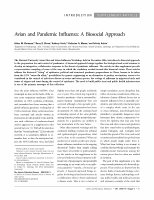
The Harvard University Asian Flus and Avian Influenza Workshop, held in December 2006, introduced... more The Harvard University Asian Flus and Avian Influenza Workshop, held in December 2006, introduced a biosocial approach to the preparation for and control of pandemics. A biosocial approach brings together the biological and social sciences to develop an integrative, collaborative response to the threat of pandemic influenza. The articles in this supplement provide a representative sampling of some of the ways in which the workshop worked toward this biosocial vision. These articles address the historical "siting" of epidemics, political and structural pandemic preparedness in China, lessons to be taken from the 1976 "swine flu affair," possibilities for genetic engineering as an alternative to poultry vaccination, issues to be considered in the control of infectious disease in swine and avian species, the ecology of influenza in migratory birds, and issues of stigma and trust during the control of epidemics. The need to build public trust and public health infrastructure is one of the primary messages of this collection.
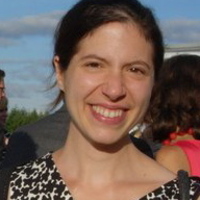

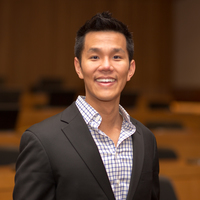


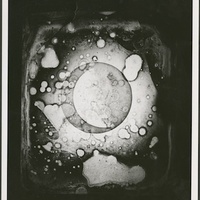



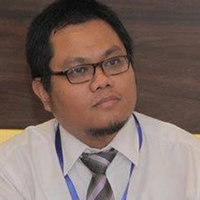

Uploads
Papers by Katherine A. Mason